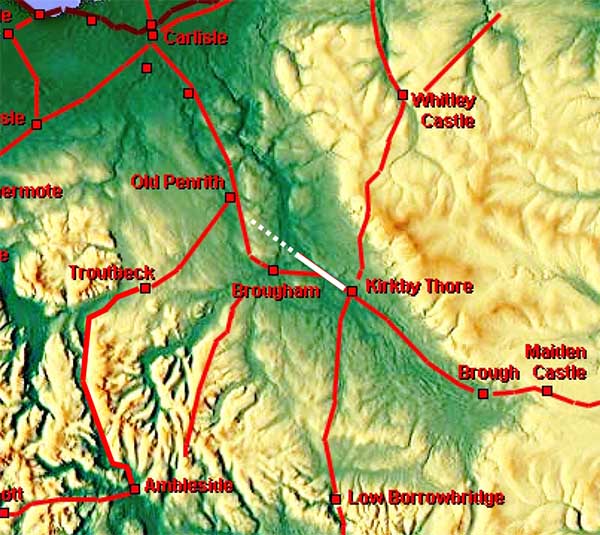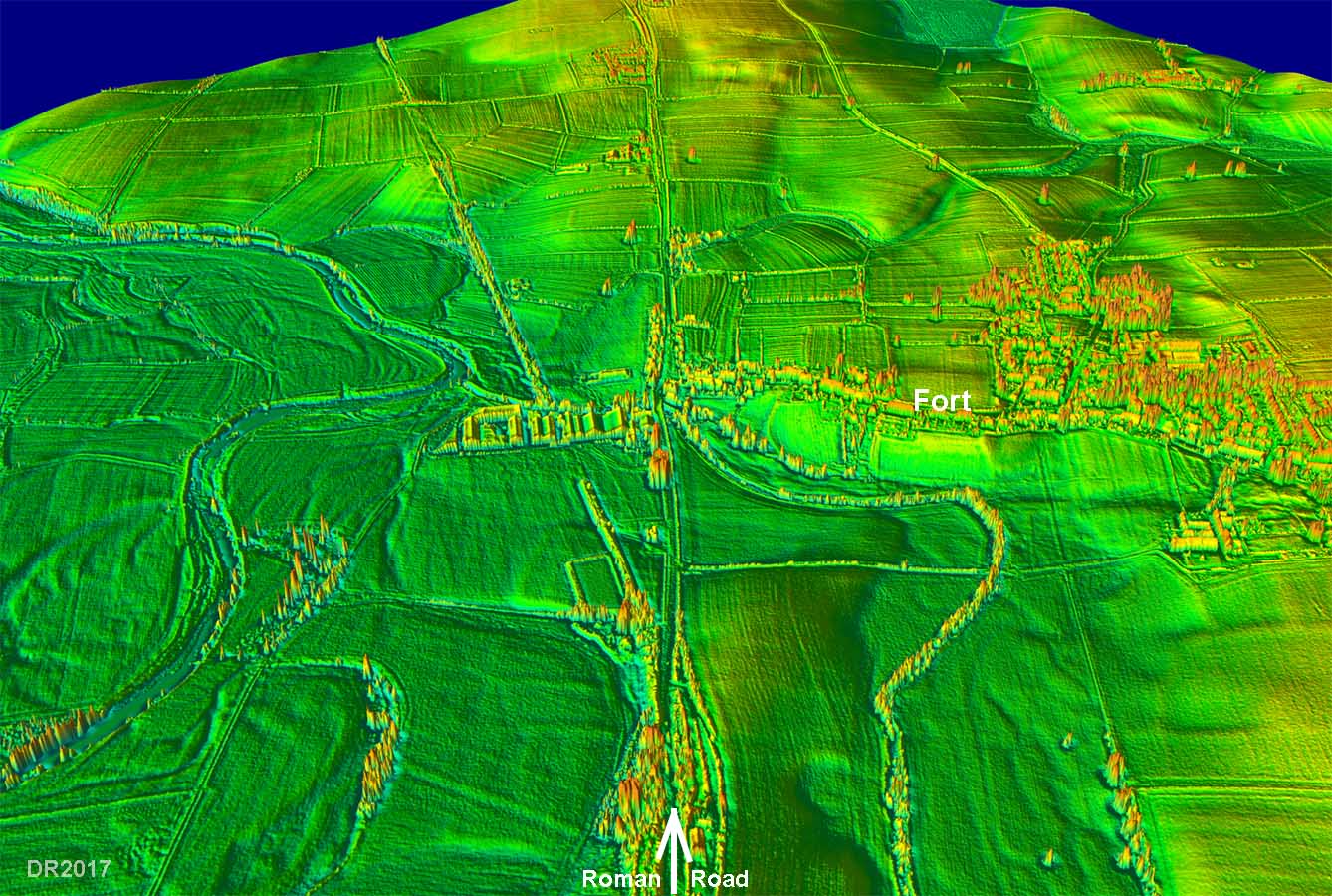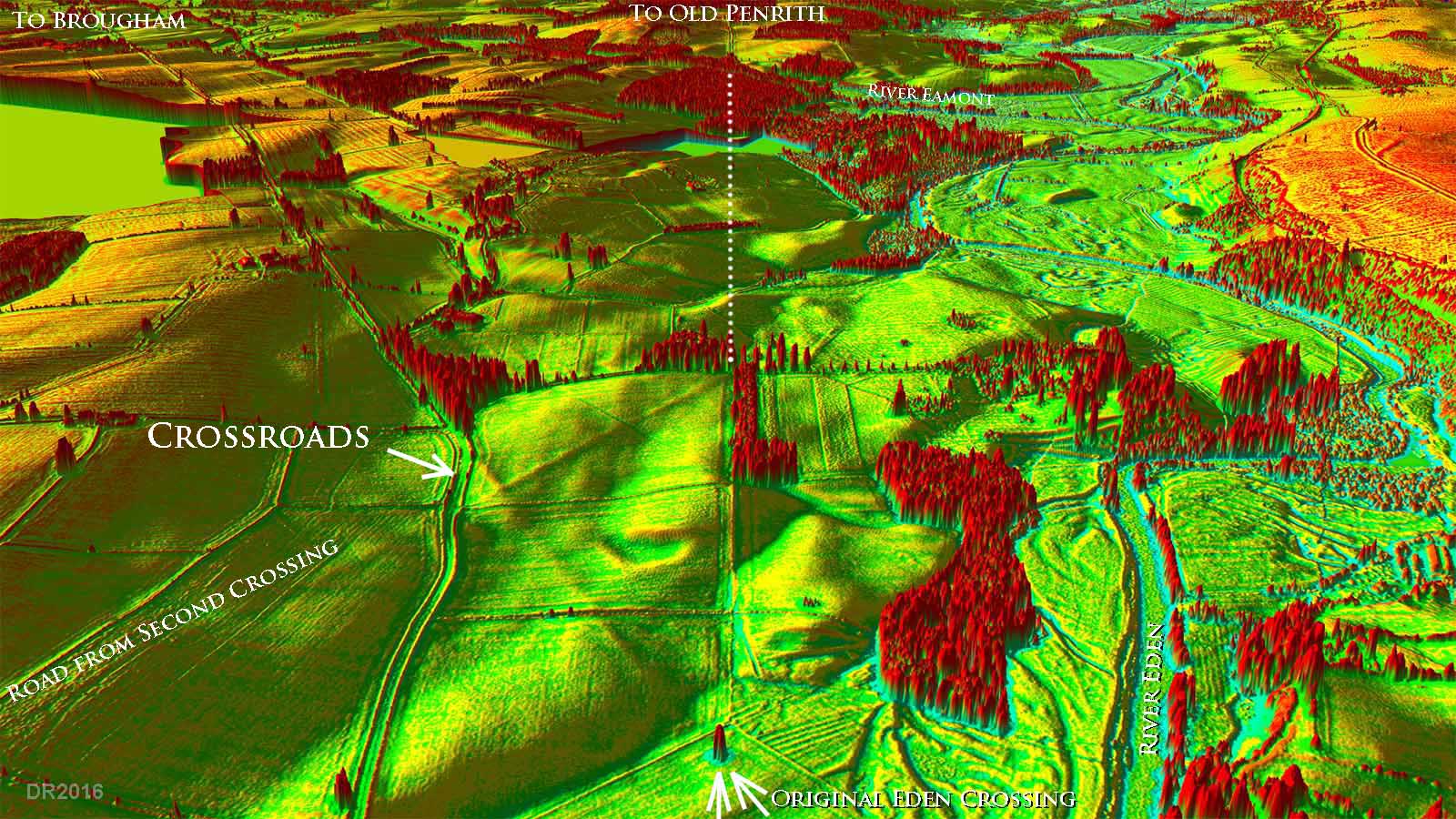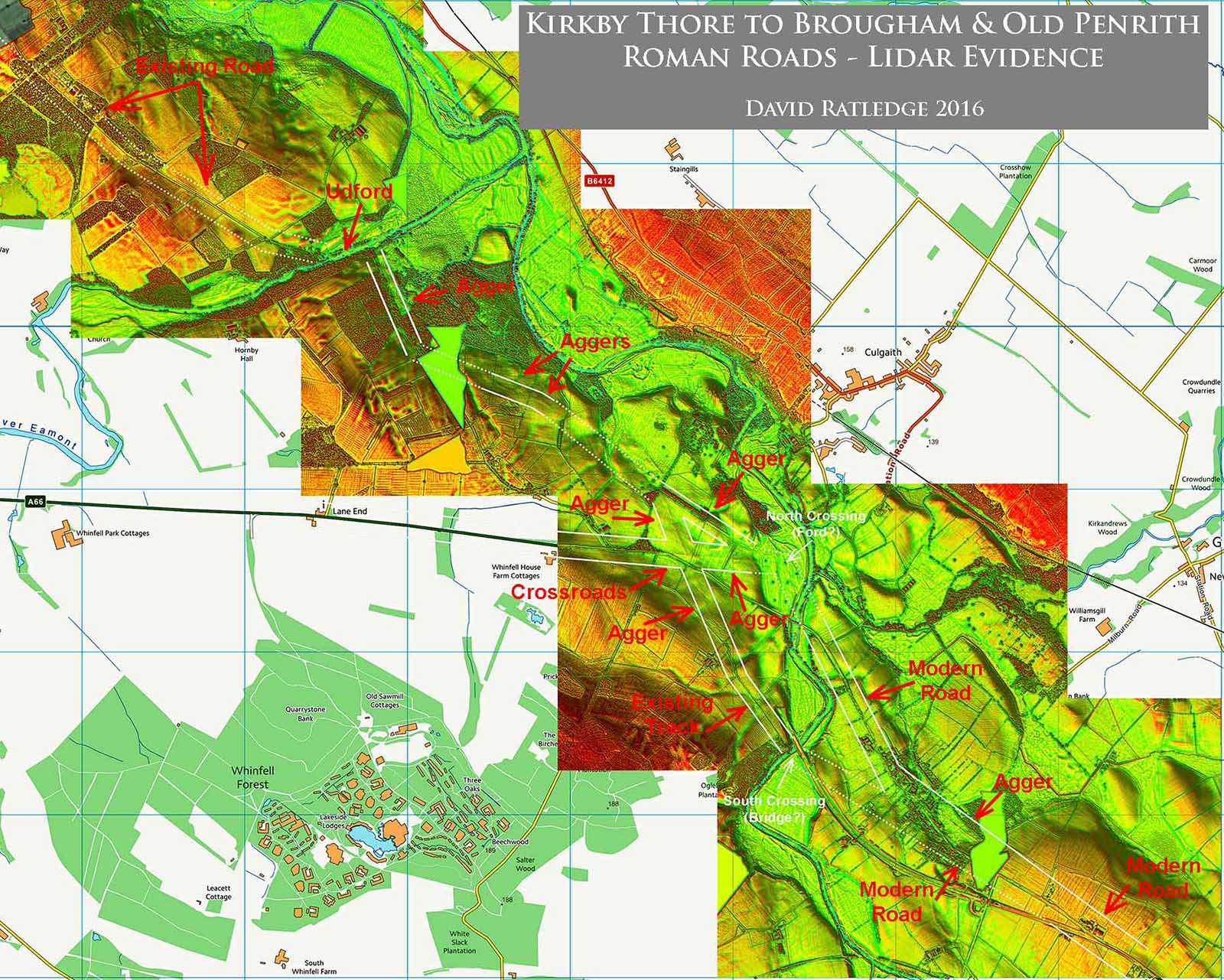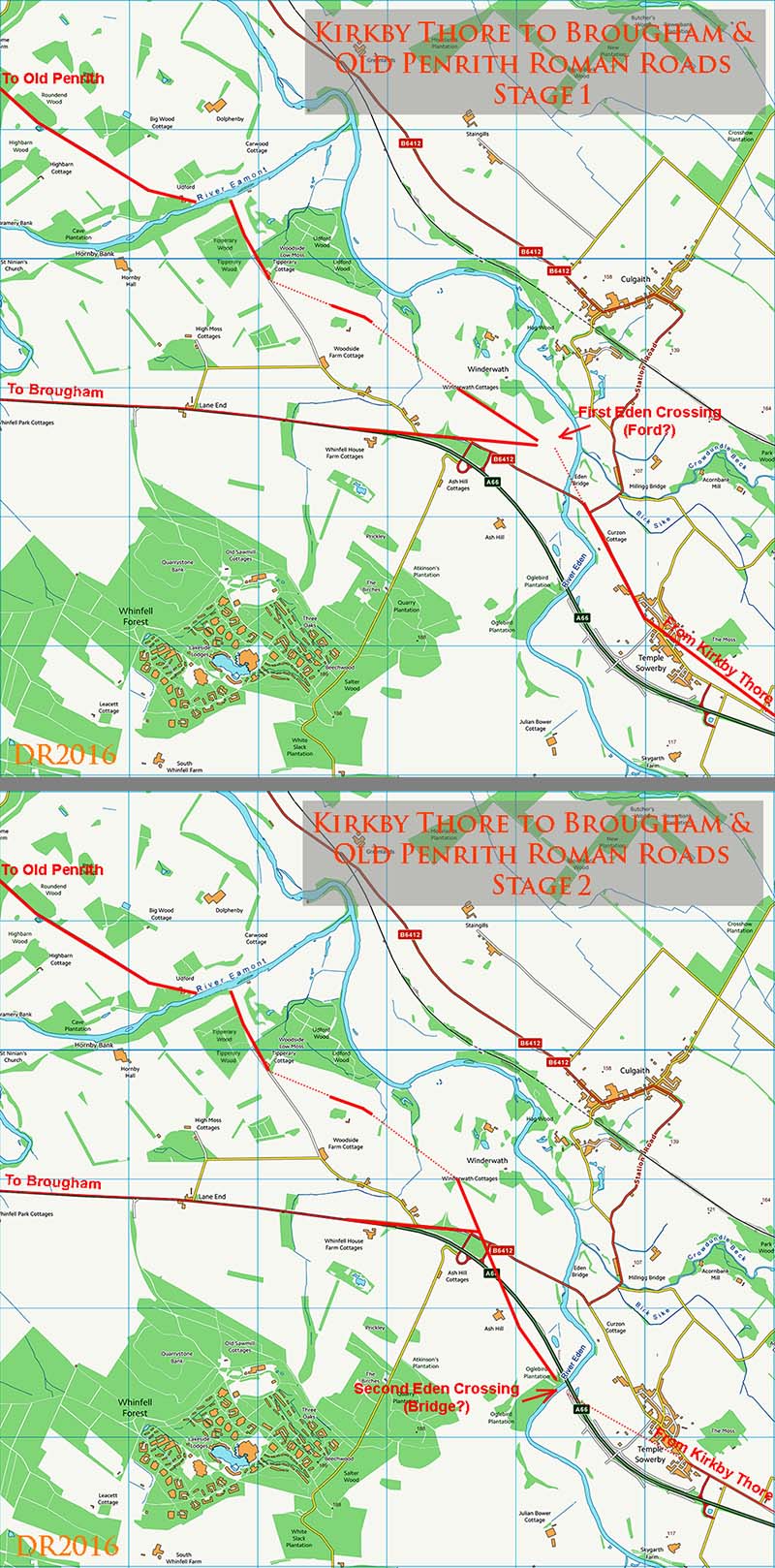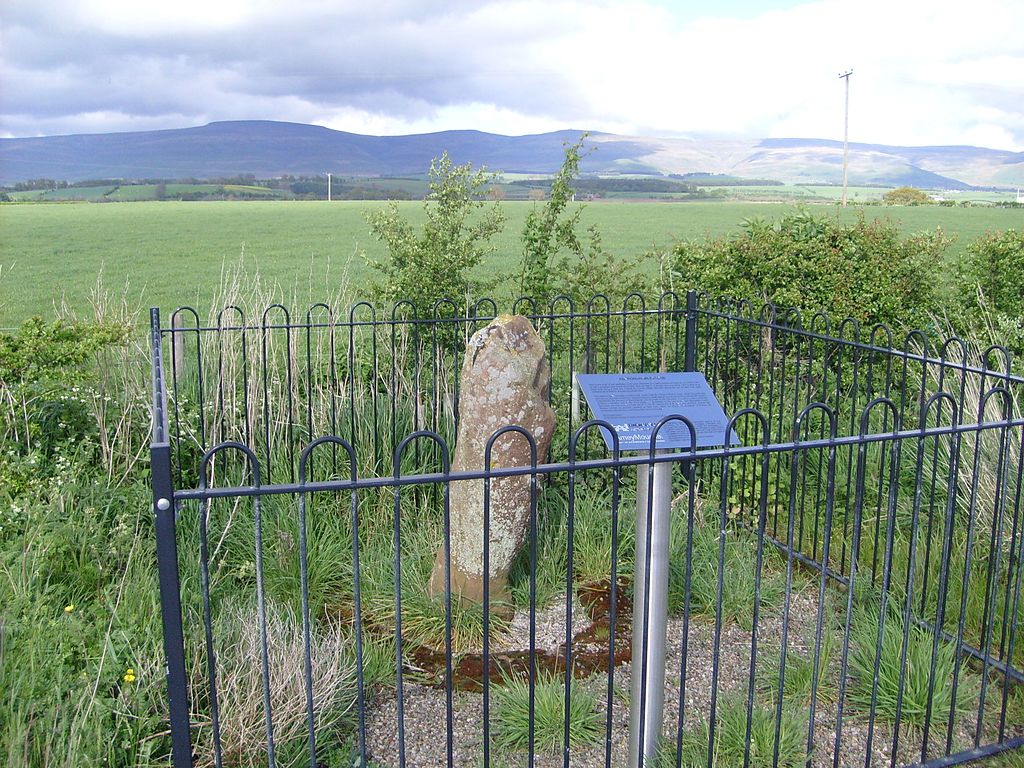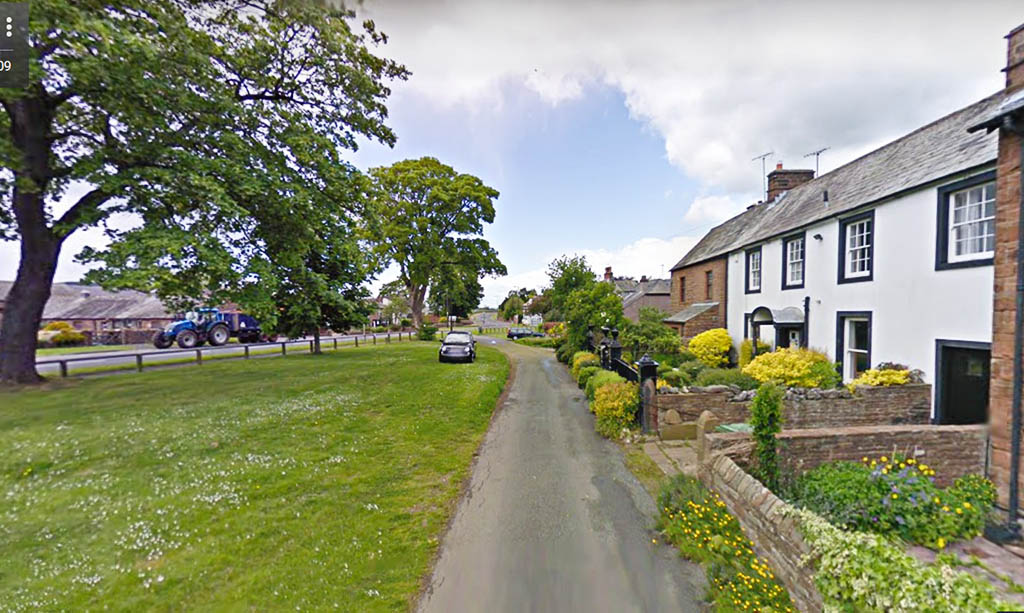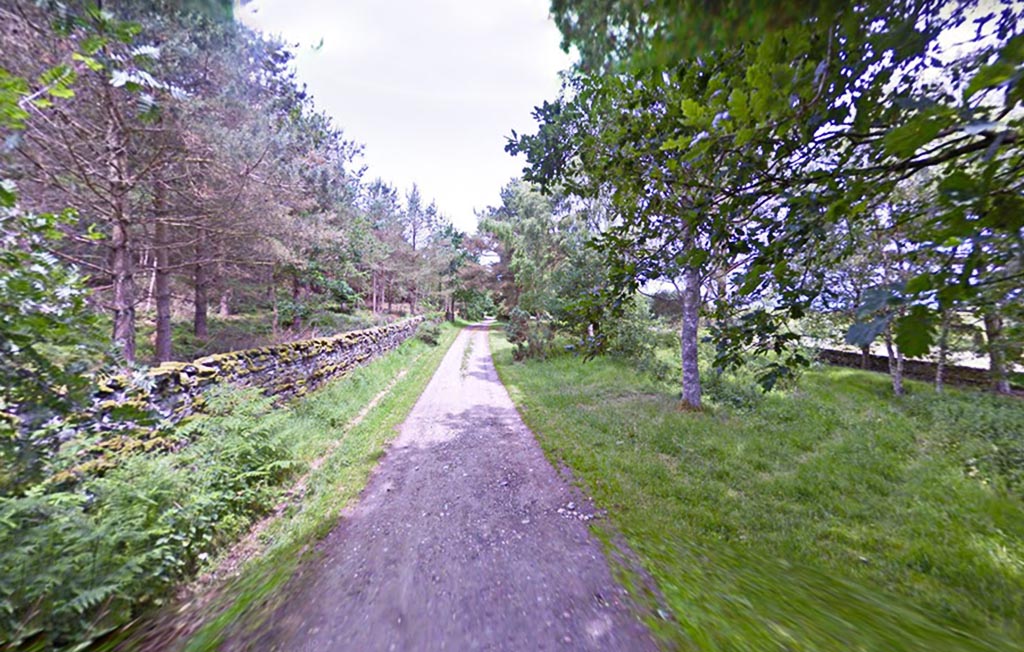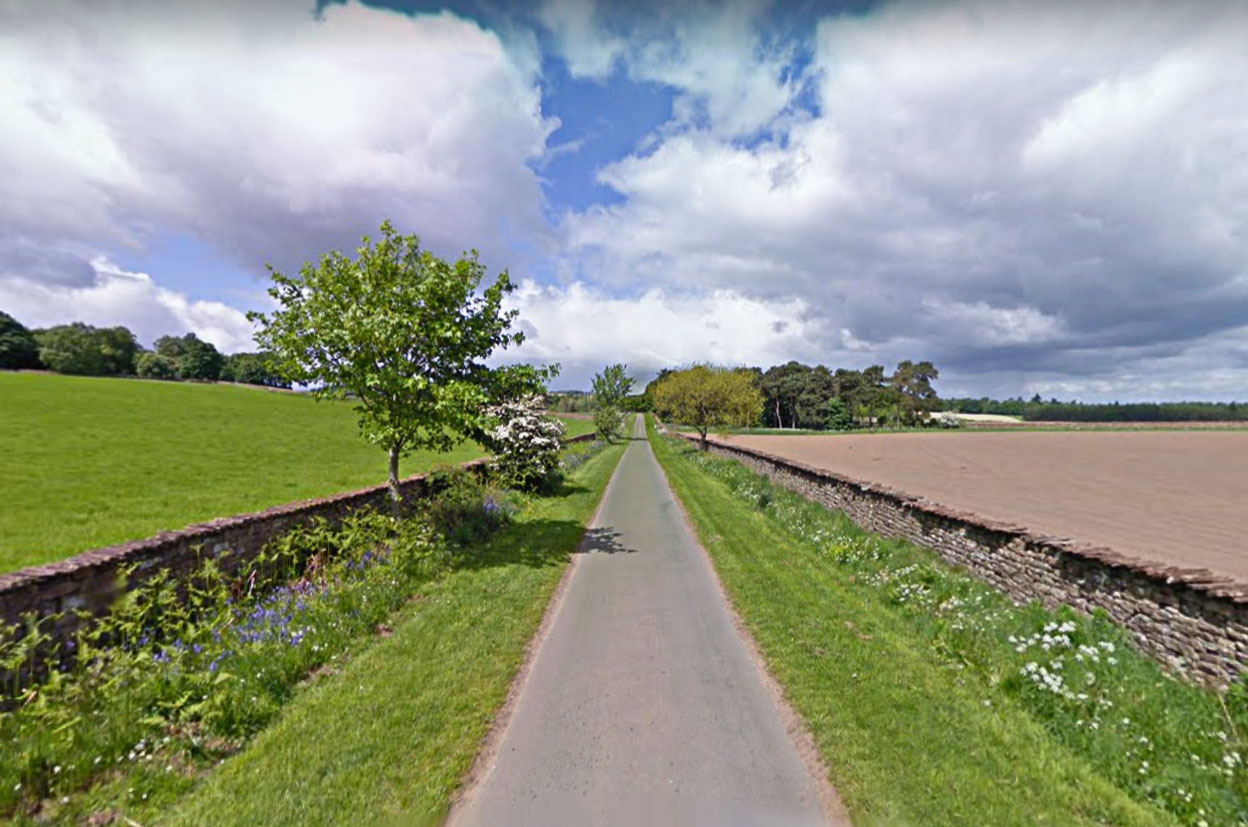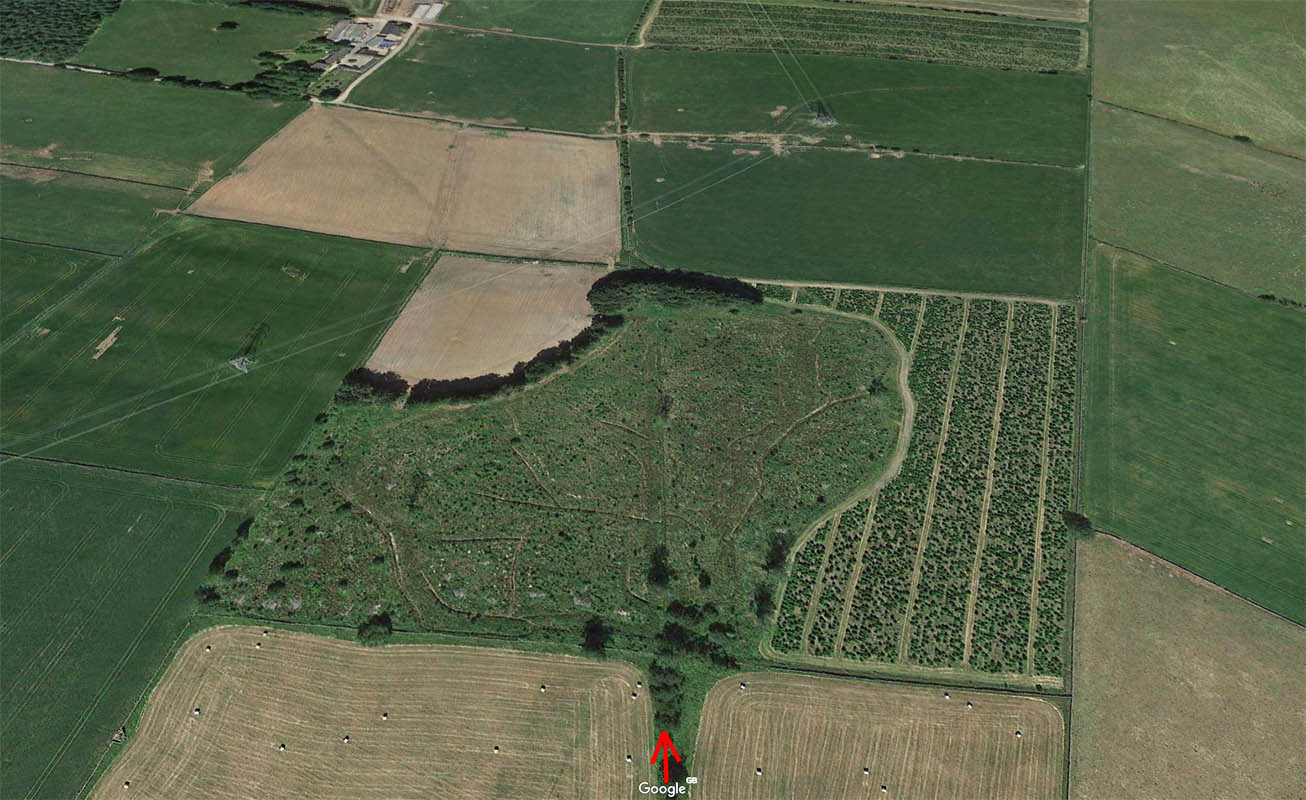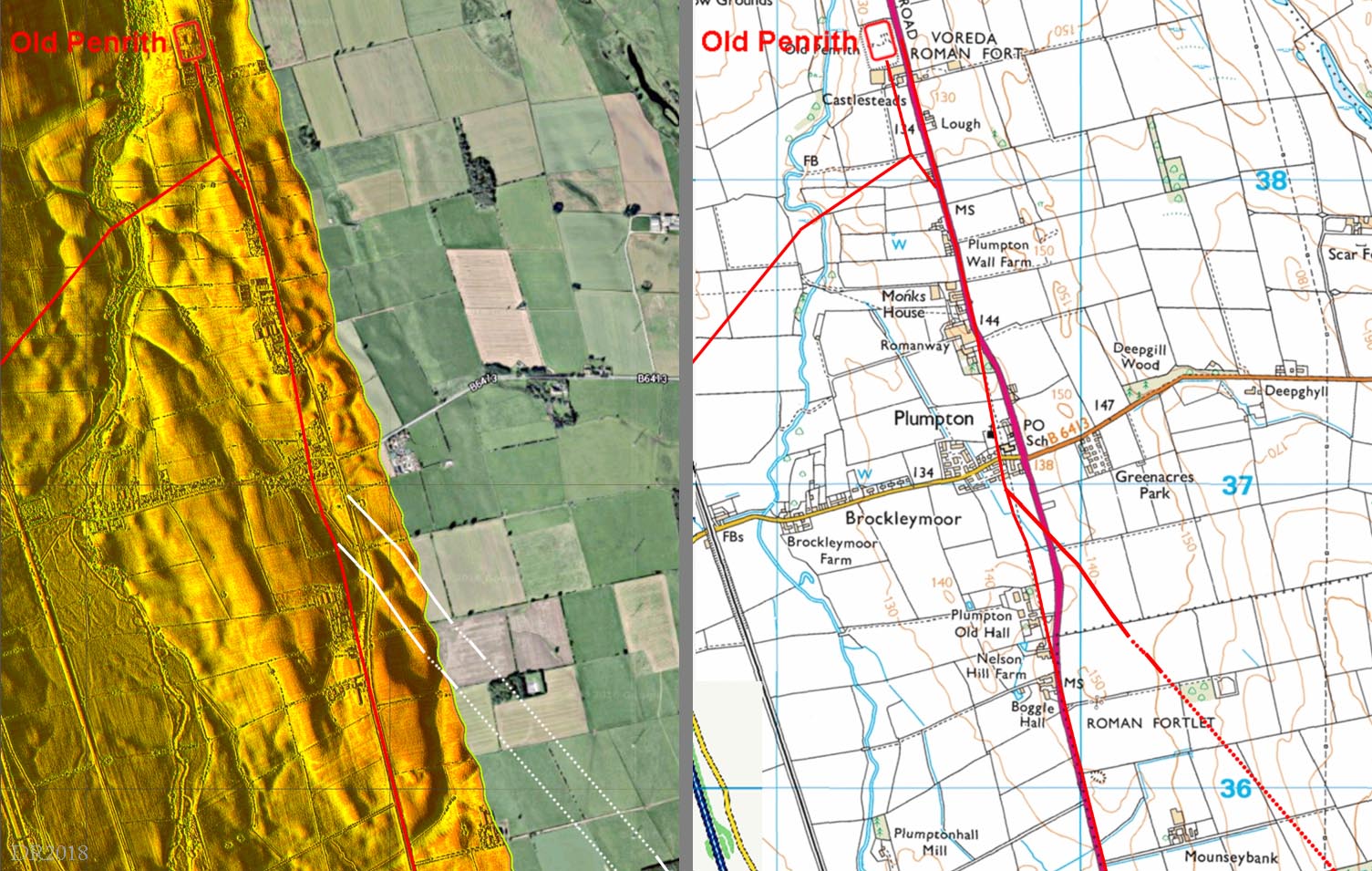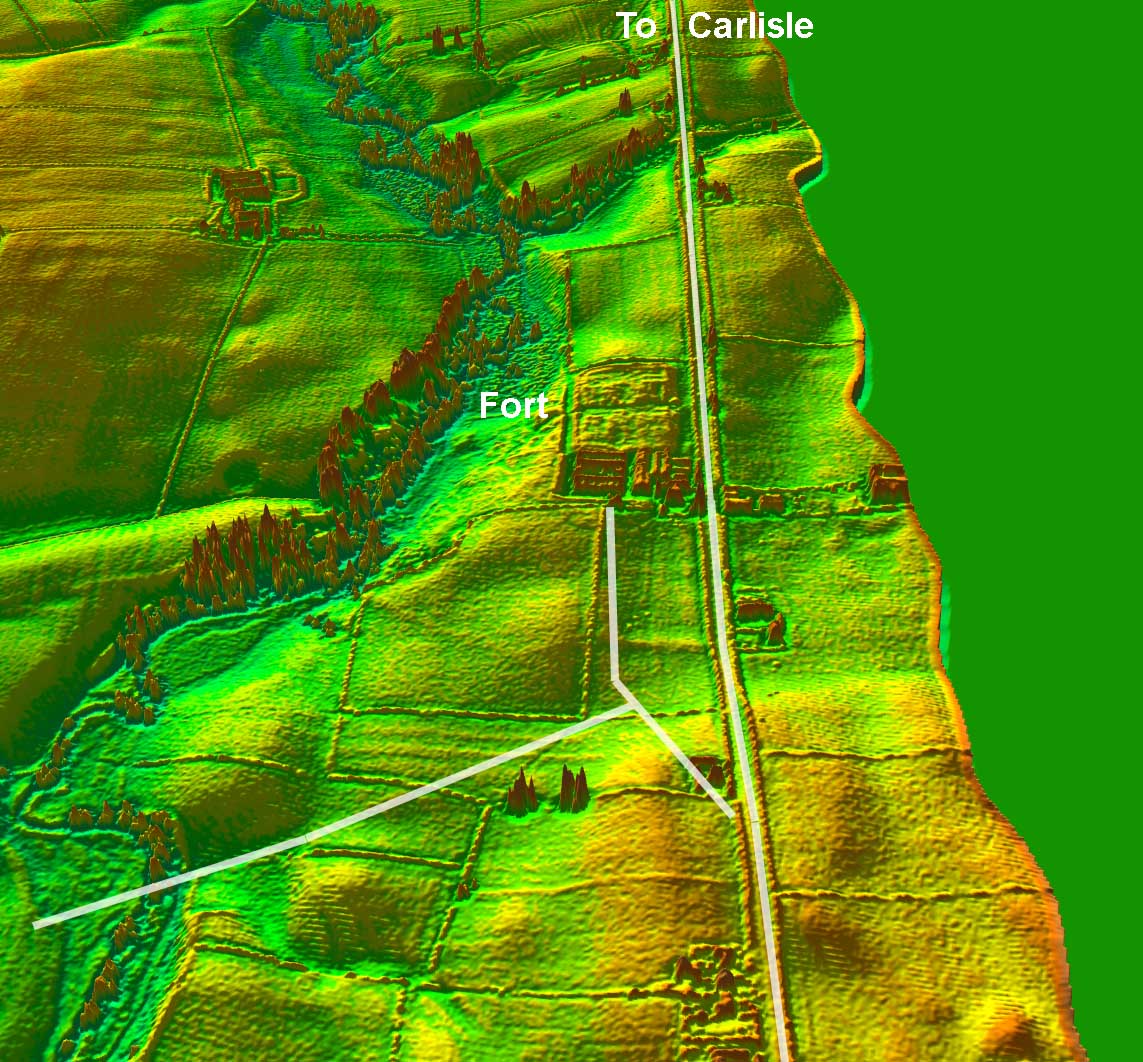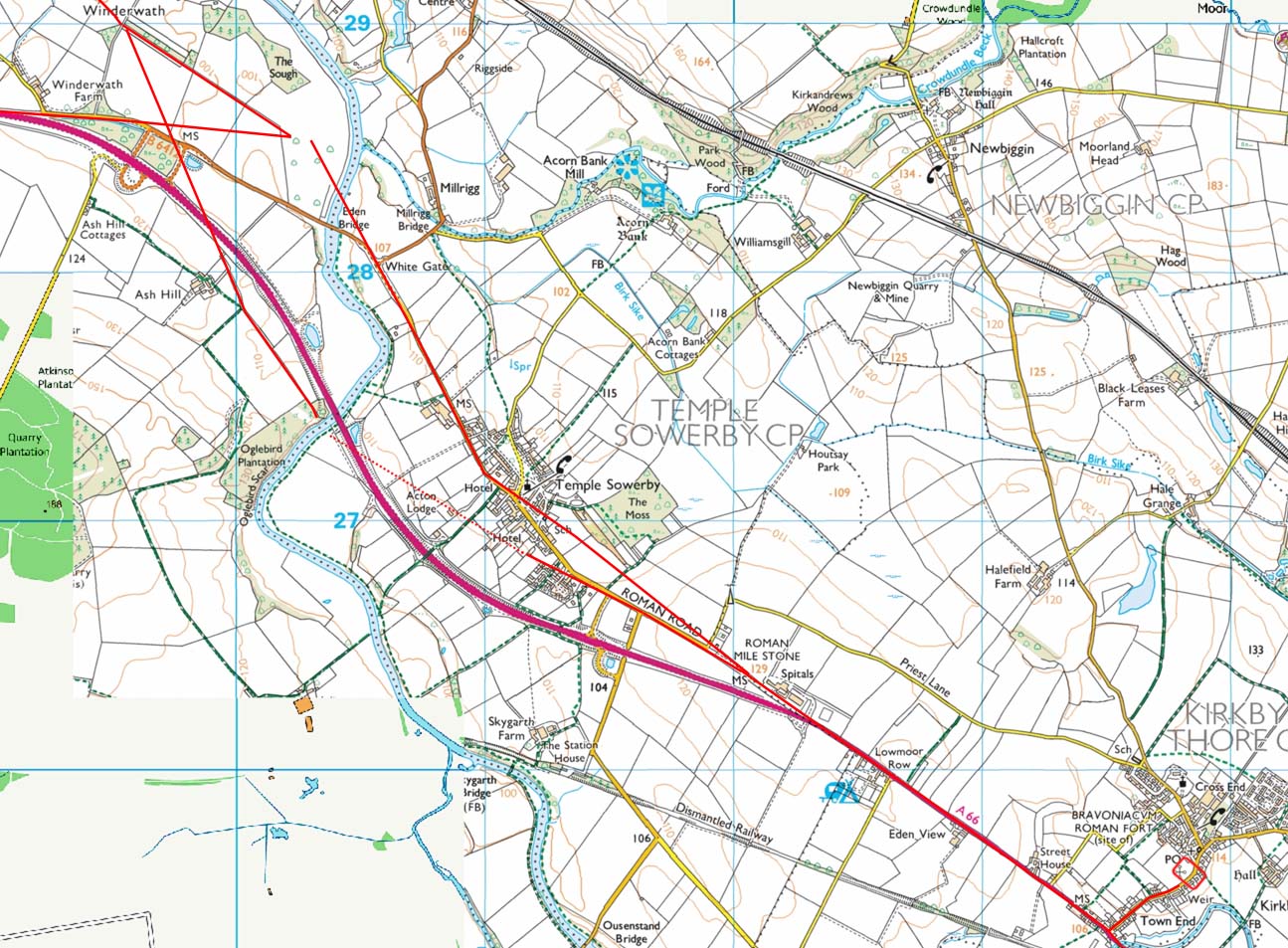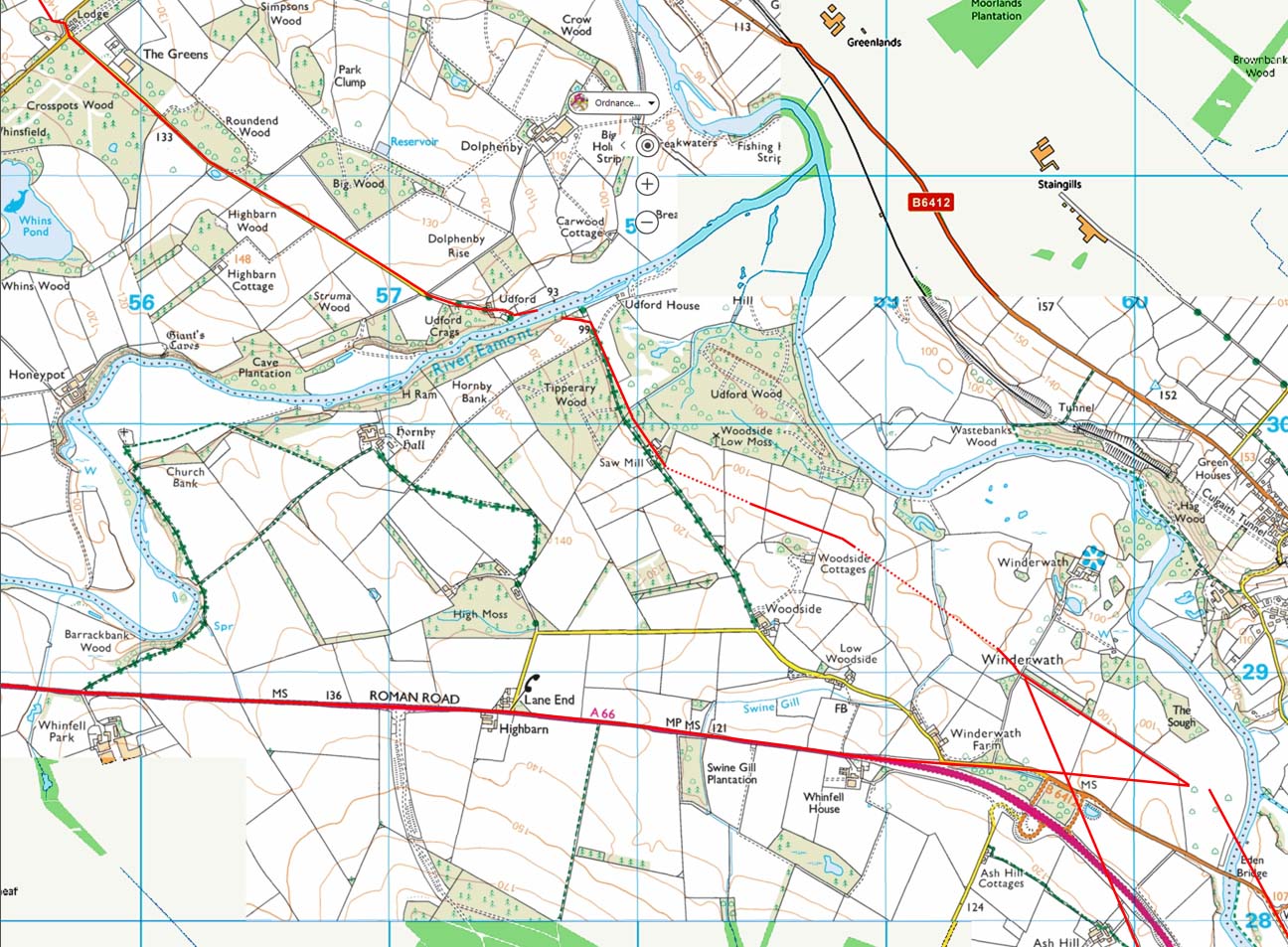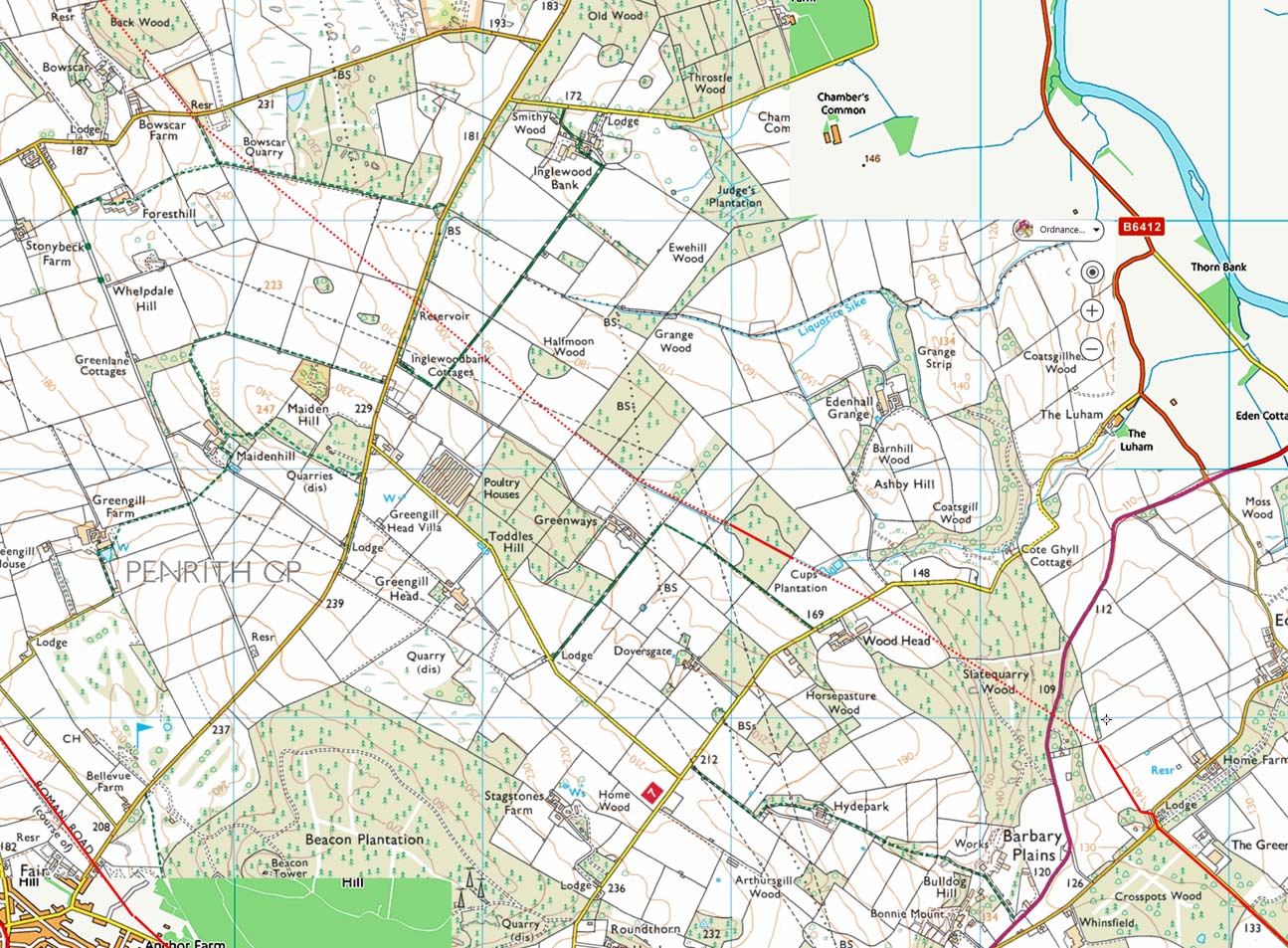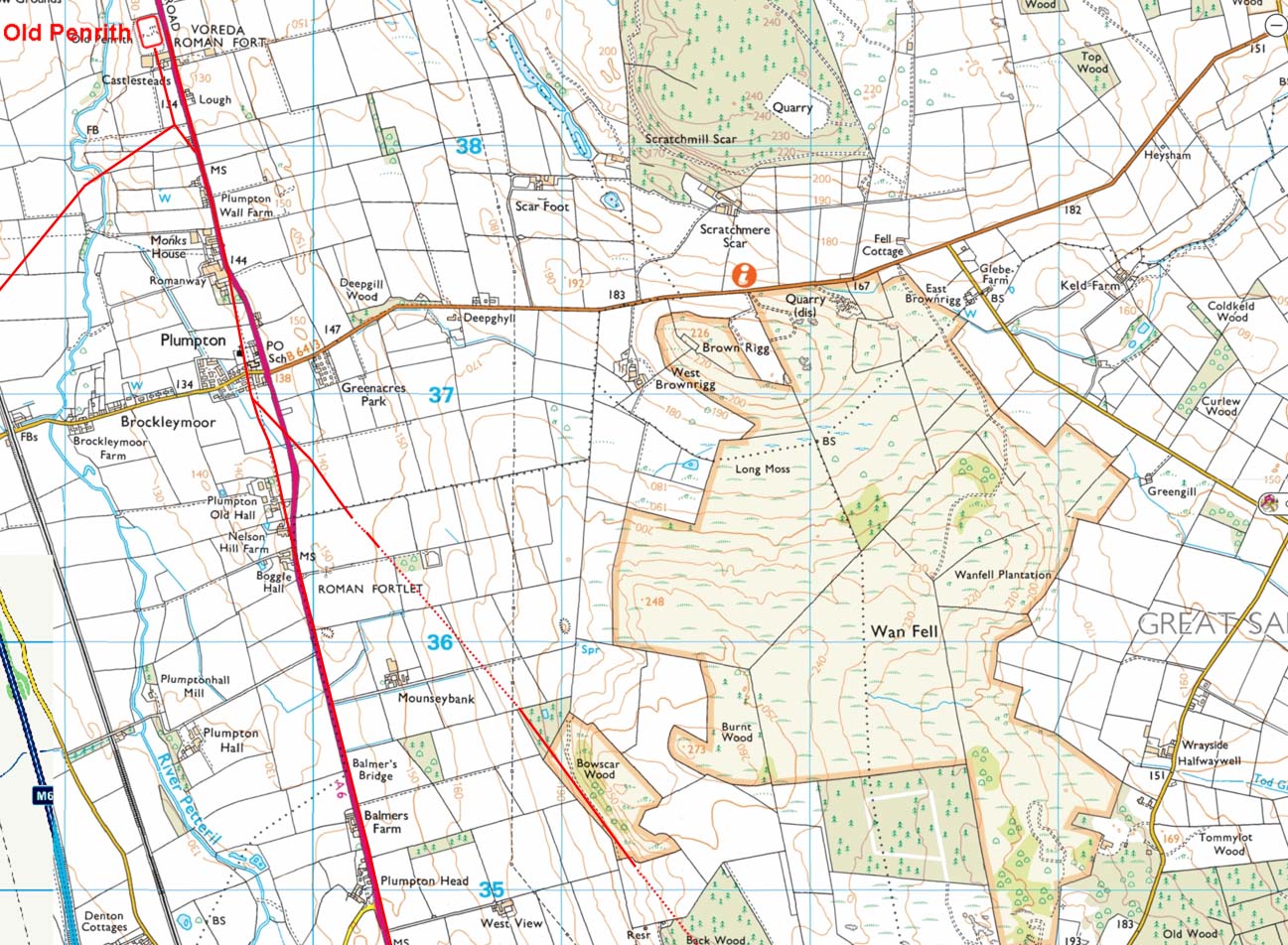Eden Crossings: Maps showing chronology of the site.
• There were obviously two Roman crossings of the River Eden.
• The northern crossing: this is located in an open stretch of the river valley providing a natural fording point. This openness is no doubt why the river has changed course here and no longer flows past the Roman crossing point.
• Both the road to Brougham and the (new) road to Old Penrith are clearly set-out and aligned with the northern crossing showing it must have been the original.
• The southern crossing: the river is very constrained here between banks and there is a substantial sandstone outcrop. Putting my bridge engineer hat on, then this is a perfect bridge site with a rock solid foundation. Undoubtedly the best spot in the vicinity for a bridge.
• I also spotted that there are two routes through Temple Sowerby - the alignment of the houses made me suspicious and lidar confirms it. There is the existing modern road plus another slightly more to the north-east. This is a more logical and direct route to the northern crossing.
• The route of the Old Penrith road from the northern crossing using the triangular bypass road now links up in a direct line with 2 pieces of lidar evidence and heads undoubtedly to the Udford on the River Eamont.
• Beyond the River Eamont this alignment continues up Udford road - this has all the hallmarks of a Roman road. I cannot understand why this has not been considered as Roman before - it is a dead ringer (see picture later).
• Beyond the top of the Udford road there is no lidar data but the Antonine Itinerary II distance of 13 (Roman) miles for Kirkby Thore to Old Penrith fits perfectly assuming this alignment continues on as would be expected. This route is supported following the discovery of the Langwathby milestone - ref. Edwards and Shotter who postulated to the likely existence of this road.
• As referred to above the southern crossing in best understood as the later bridging point.
• The route and direction from the southern crossing up to the Brougham road and onto the Old Penrith road now makes perfect sense. It is the shortest route to join up with the already constructed roads from the earlier northern crossing (ford?). It is exactly where you would build a linking road.
• When the southern crossing comes into use then the roads east of the crossroads and the triangular bypass road become redundant. So the crossroads was never actually a crossroads!
• What cannot be determined is which destination was first - Brougham or Old Penrith. However the general direction of the Stainmore road passing Kirkby Thore is certainly more aligned with Old Penrith than Brougham.. |

